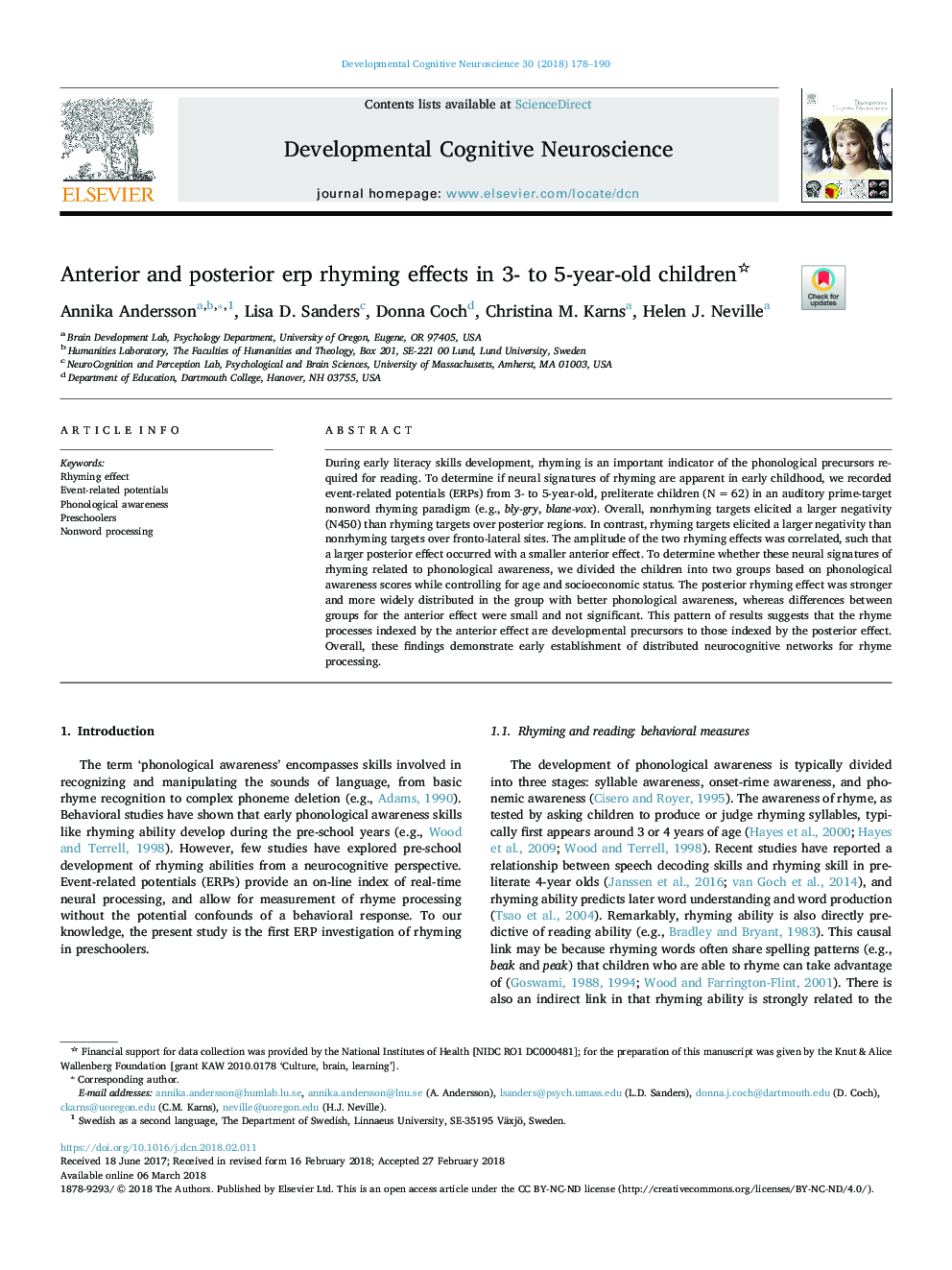| کد مقاله | کد نشریه | سال انتشار | مقاله انگلیسی | نسخه تمام متن |
|---|---|---|---|---|
| 8838295 | 1613093 | 2018 | 13 صفحه PDF | دانلود رایگان |
عنوان انگلیسی مقاله ISI
Anterior and posterior erp rhyming effects in 3- to 5-year-old children
ترجمه فارسی عنوان
اثرات رحم قدامی و خلفی در کودکان 3 تا 5 ساله
دانلود مقاله + سفارش ترجمه
دانلود مقاله ISI انگلیسی
رایگان برای ایرانیان
کلمات کلیدی
اثر قافیه، پتانسیل مربوط به رویداد، آگاهی واژگان کودک پیش دبستانی، پردازش غیرمستقیم،
موضوعات مرتبط
علوم زیستی و بیوفناوری
علم عصب شناسی
علوم اعصاب رفتاری
چکیده انگلیسی
During early literacy skills development, rhyming is an important indicator of the phonological precursors required for reading. To determine if neural signatures of rhyming are apparent in early childhood, we recorded event-related potentials (ERPs) from 3- to 5-year-old, preliterate children (Nâ¯=â¯62) in an auditory prime-target nonword rhyming paradigm (e.g., bly-gry, blane-vox). Overall, nonrhyming targets elicited a larger negativity (N450) than rhyming targets over posterior regions. In contrast, rhyming targets elicited a larger negativity than nonrhyming targets over fronto-lateral sites. The amplitude of the two rhyming effects was correlated, such that a larger posterior effect occurred with a smaller anterior effect. To determine whether these neural signatures of rhyming related to phonological awareness, we divided the children into two groups based on phonological awareness scores while controlling for age and socioeconomic status. The posterior rhyming effect was stronger and more widely distributed in the group with better phonological awareness, whereas differences between groups for the anterior effect were small and not significant. This pattern of results suggests that the rhyme processes indexed by the anterior effect are developmental precursors to those indexed by the posterior effect. Overall, these findings demonstrate early establishment of distributed neurocognitive networks for rhyme processing.
ناشر
Database: Elsevier - ScienceDirect (ساینس دایرکت)
Journal: Developmental Cognitive Neuroscience - Volume 30, April 2018, Pages 178-190
Journal: Developmental Cognitive Neuroscience - Volume 30, April 2018, Pages 178-190
نویسندگان
Annika Andersson, Lisa D. Sanders, Donna Coch, Christina M. Karns, Helen J. Neville,
